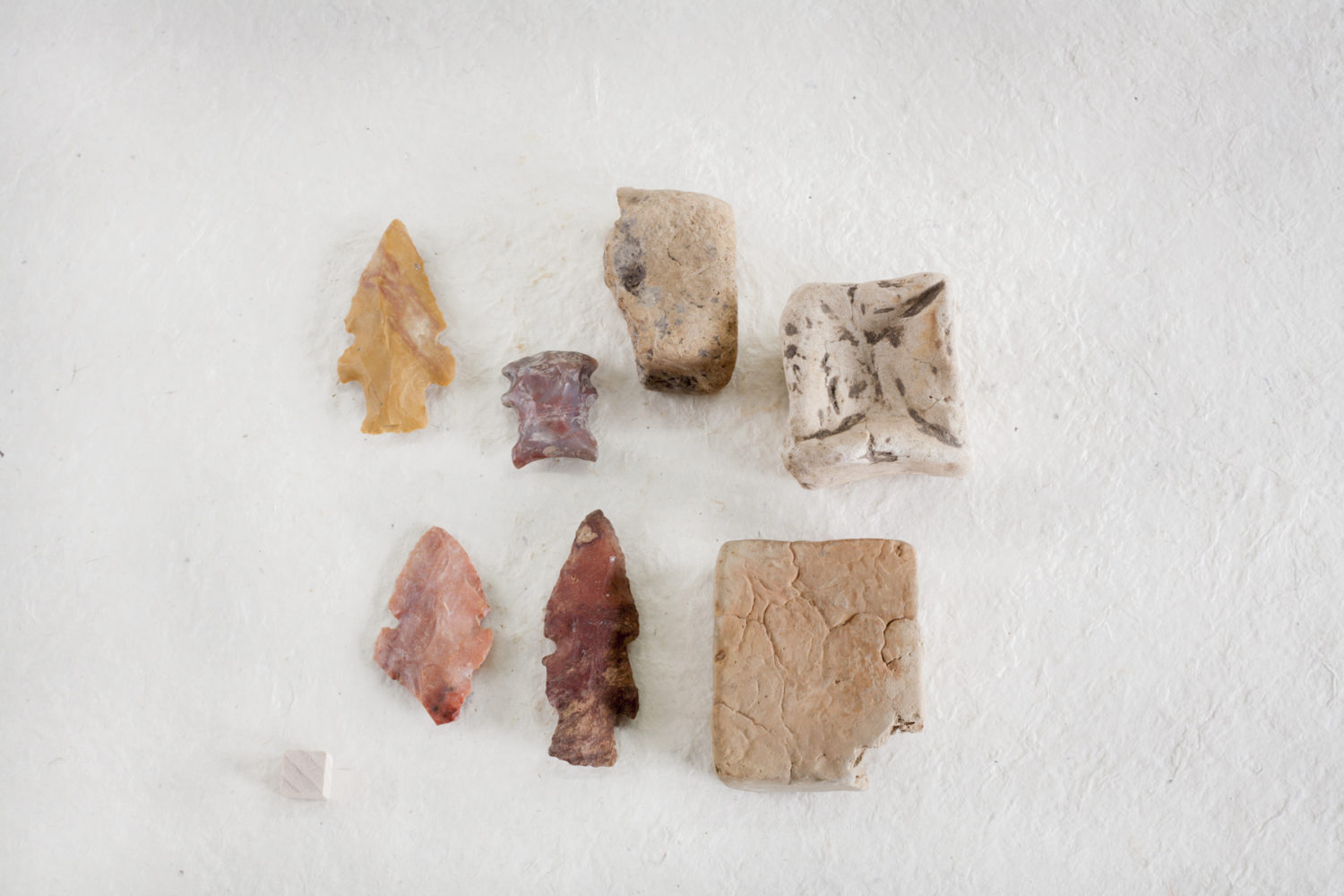Understanding Prehistoric Louisiana
By studying artifacts, archaeologists know that people were in Louisiana at least 13,000 years ago.
This entry is 4th Grade level View Full Entry

Photo by Jenny Ellerbe.
Middle Archaic Period Artifacts.
How do we know things about people who lived in the distant past?
The main difference between the terms “history” and “prehistory” is the presence of written records. History is the study of recorded events—events we know about because someone wrote them down. Prehistory is the time before writing was introduced. However, just because Americans Indians (also known as Native Americans) didn’t have writing systems like Europeans doesn’t mean they didn’t have history. They just had different ways of recording it. In fact, many archaeologists and present-day American Indians now refer to the time before European colonization as the precolonial, rather than the prehistoric, period.
One way of understanding prehistory is called archaeology. Archaeologists study people in the prehistoric past by looking at artifacts. Artifacts are objects made and used by people. But it’s important to remember that not all things made and used survive until today. For instance, objects made of wood or cloth usually don’t survive, but stone tools and pottery do. Most artifacts like these are found below the ground, because they were buried on purpose, like artifacts found in trash pits. Others were buried accidentally, by soil that builds up naturally on sites over time. Archaeologists study the changes in artifacts, like the shape of stone tools and the decorations on pottery, to understand how people lived in the distant past.
What do we know about prehistoric Louisiana?
Stone artifacts tell us that American Indians were in Louisiana at least 13,000 years ago, when large animals like mastodons, ground sloths, giant bison, and saber-toothed tigers lived. American Indians made spears tipped with stone points and many other stone tools for scraping and cutting. Using these tools (and others that have eroded away), they moved with the seasons to hunt, fish, and gather wild plant foods. They began building mounds in Louisiana around 7000 years ago, making pottery about 2800 years ago, and farming corn about 800 years ago. As early as 8000 years ago, they began to settle down into more permanent camps and probably had permanent villages by at least 1600 years ago.
Archaeologists divide up the past into periods to help them understand how things changed—and to better communicate with each other. There are four prehistoric time periods that archaeologists use to talk about American Indian cultures in the United States and Louisiana. These time periods are the Paleoindian (11,500–8000 BCE), Archaic (8000–800 BCE), Woodland (800 BCE–1200 CE), and Mississippi (1200–1700 CE) periods. Most archaeologists end the prehistoric period in Louisiana at 1700 CE, when Europeans began to settle in the area.
